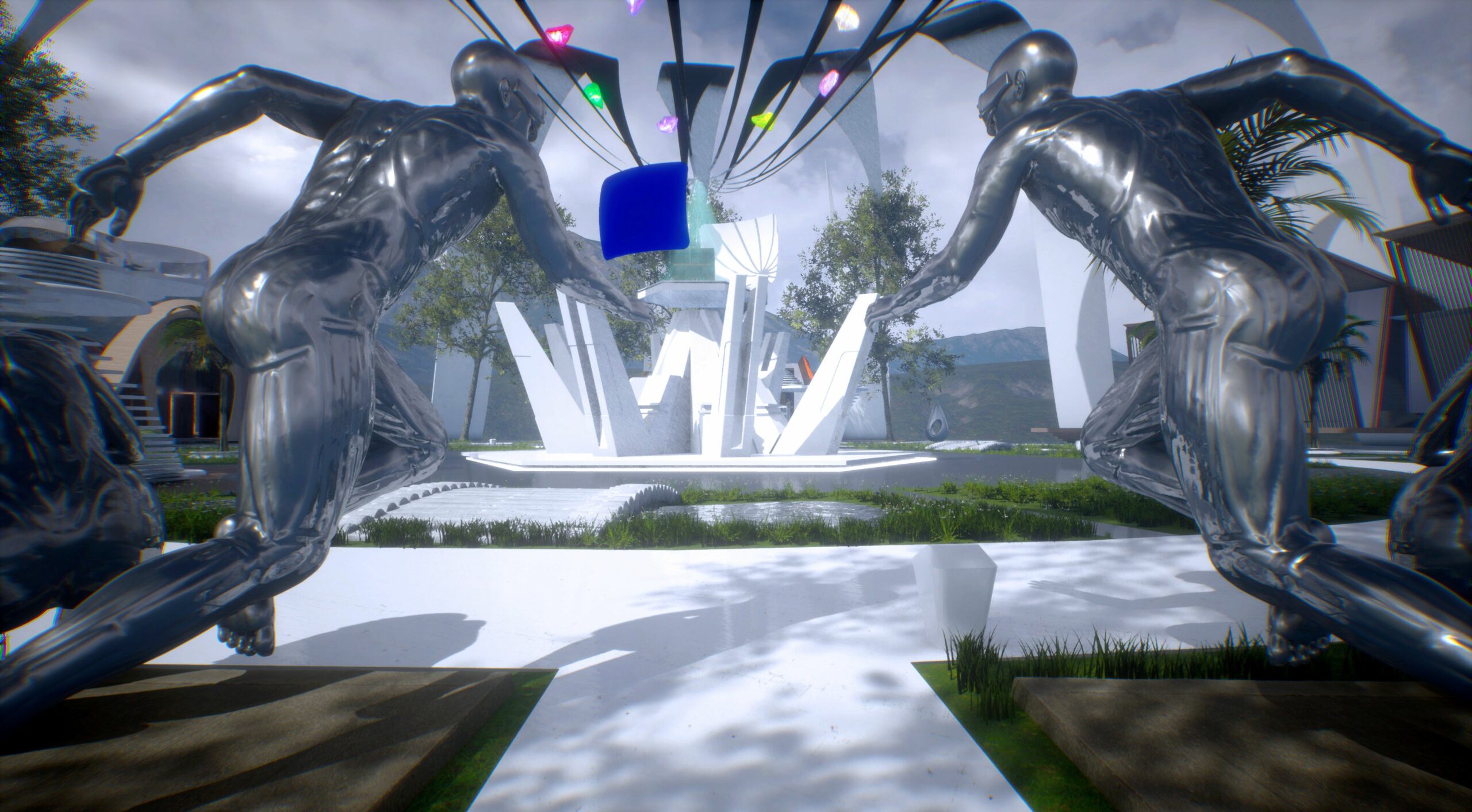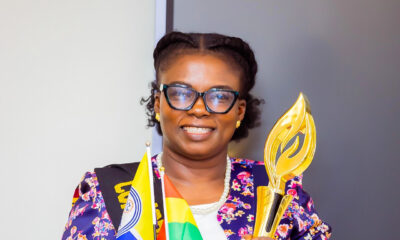Scoop
Thrill Digital is on a Mission to Revolutionise Fashion in the Digital World

After receiving a US$40,000 grant in 2021 from Epic Games, a US video game and software development company, Thrill Digital launched Astra. This “metaverse”, which includes fashion, gaming and crypto-currency to create a virtual world, is helping to set the pace for the metaverse in Africa. But it didn’t start out this way.
Thrill Digital was created by Nigerian fashionista Alexander ‘Delz’ Erinle in 2020 as a fallback plan in the post-Covid-19 pandemic era. Then, the metaverse exploded – and the impact was felt in Africa, as elsewhere. He and co-founders Niyi Okeowo and Luke Jeffers saw an opportunity.
“While we were developing Thrill XR, the metaverse became more popular; that’s when we realised what we were building was a metaverse. We rebranded and gave it its own name–Astra,” says Erinle.
The building blocks for a “metaverse” (a virtual version of the real world that uses virtual reality, augmented reality, virtual currencies and other devices to offer an immersive online experience) are not new; online stores have been in existence for decades, as have virtual reality games, virtual reality headsets and augmented reality programs. But the virality of cryptocurrencies, together with the move online during COVID-19 lockdowns, has given the concept wings.

During the lockdown, Erinle wrote an article in which he created scenarios, shared his resources, and talked about his experience building Thrill Digital.
The article caught the attention of Sallyann Houghton, Industry Manager for Fashion/Apparel at Epic Games, who later encouraged Erinle to apply for an Epic MegaGrant. The grant made the launch of Astra possible.
While Astra was created to “revive the fashion industry with digital technology in a post-pandemic world” the UX designer and co-founder of Thrill Digital explained that his company has now become so much more than a fashion tech start-up.
Astra has become Astraverse, a metaverse home to many virtual cities and activities.
Erinle is not doing this alone. He is part of a team that consists of co-founders Jeffers and Okeowo complemented by Adekunbi Ajai, Charles Egbejule, and Femi Falade who bring diverse inputs in art, architecture, design, fashion, virtual and augmented reality.

Ajai, the Virtual Reality Architecture Lead at Astraverse, believes that Thrill Digital is thriving because of its work culture and the vision of the minds that create the products.
“We are a diverse team that’s constantly growing. Everything we do, even our work culture, is futuristic. We all work
remotely. I’ve only met Erinle in person twice since we started working together in 2020. Currently, we hire on a contract basis, so our staff strength is sometimes as high as 30, and sometimes as low as five. It depends on the assets under development at Astra,” she explained.
With plans to create Non-Fungible tokens (NFTs) and an “Astra Token”, Erinle believes his start-up is ready to take up the task of introducing metafashion and metacommerce to consumers.
“Astra’s business model is business-to-business (B2B) and business-to-consumer (B2C). While we want to bring brands to the metaverse, we also want to give a good customer experience. We’re sustainability-driven, with the concept of having an NFT-first supply chain. Products will first exist as 3D assets that customers can try on with avatars, buy with a cryptocurrency, then have a physical version delivered to them,” he said.

Astra plans to offer 3D assets such as fashion items like bags, clothes, shoes, accessories, and more. These digital items will be acquired digitally with cryptocurrency. Consumers’ avatars can then wear them as often as they like within the Astraverse.
Non-Fungible tokens (NFTs) refer to digital items which are unchangeable. These items can be artworks, digital clothes, cartoon characters, architecture models or original photographs. Owning an NFT is comparable to having a limited edition of a bag or clothing, where the ownership of it signifies that it was bought directly from the creator of the item.
The Ethereum cryptocurrency website explains NFTs as “tokens we can use to represent ownership of unique items. (NFTs) let us tokenise things like art, collectables, even real estate. They can only have one official owner at a time and they’re secured by the Ethereum blockchain – no one can modify the record of ownership or copy/paste a new NFT into existence.”
In a 2022 report, The State of Fashion and Technology, the authors warn that the forerunners of fashion in the virtual world will face hurdles in consumer adoption because “78 percent of people who have already ventured into virtual worlds say they miss physical interaction when doing so”.
“As a result, many players will likely hang back to see evidence of commercialised use cases and a tangible ROI(return on investment) before investing. For others that want to capture the commercial opportunity, the biggest short-term revenue potential lies with virtual assets that can be traded, transferred, or used for payment,” the report adds.
Nevertheless, there’s plenty of room for growth and commercialisation.
“Pioneers in the metaverse have shown there is a business case for fashion brands to invest in virtual worlds… Global spending on virtual goods reached an estimated $110 billion in 2021, more than doubling the total in 2015, with around 30 per cent attributed to virtual fashion.It is expected to grow at roughly the same rate as the gaming market to be worth around $135 billion or higher by 2024” the report adds.
With African metaverses like Africarare and Ubuntuland already up and running, economists predict that a metaverse ecosystem could add US$40 billion to Africa’s economy within a decade.
Another new entrant into the fashion tech business is Balboa Tachie-Menson, a Ghanaian who launched her digital fashion house, Balm Labs, at the peak of the pandemic.
Balboa has explained how the lockdown motivated her to focus on her digital fashion business.
“I believe (the African fashion industry) is going in the right direction. I think digitalisation will make it more efficient and refreshing. I had created Balm Labs prior to moving back and started working on the business plan a few months before I left San Francisco. However, what motivated me to really focus on my project was the country going into lockdown. It gave me the time to focus and create,” she said in an article published on the Jendaya website.
According to Statista, Africa’s market share in fashion revenue is an estimated US$8.56bn and is expected to have a
compound annual growth rate (CAGR) of 16.46 percent, resulting in an estimated value of over US$13bn by 2025.
Despite the infinite opportunities in fashion tech and the metaverse for Erinle and others, access is one of the greatest hurdles for many consumers.
For increased engagement in extended reality (virtual and augmented reality), access to reliable internet in terms of stability, speed and spread is critical.
According to Erinle, internet speed is key to both gaming and the shopping experience in the metaverse. But he and his team are nothing if not proactive.
“For many people, the extended reality is difficult to access, which is why we’re not starting playastra.com with VR/AR; we’re doing it straight on the laptop. The main problem we have is that the internet speed in Africa isn’t fast enough for the online gaming and shopping experience. So, at the moment, our target market is people in the diaspora first,” Erinle explains.
“Our approach is ‘by Africans, for the rest of the world.”
According to GSMA, 4G adoption in large parts of Africa will double to 28 per cent by 2025, compared to a global average of 57 per cent. The 5G adoption is still in its early stages in Africa but by the end of 2025, 5G is expected to account for 3 per cent of total mobile connections in the region.
Charles Egbejule, Lead Digital Fashion Designer at Astraverse, said the challenges won’t deter the team. He is working to combine the physical and digital aspects of fashion for utilitarian use.
“Very few fashion items can live from generation to generation. But, at Astra, we’re exploring ways where you can
associate a digital item with its physical counterpart. Instead of the physical item being the hallmark of utility, its digital representation is nested with utility, becoming a vessel that has different aspects. This could serve as a coupon, ticket, discount, or exclusive access,” he said.
“We’re in talks with fashion brands, fashion weeks, and fashion media to see how we can bring this immersive and new technology into the traditional space. We also have plans to host live events where people can connect physically with the team,” Egbejule continued.
Digital fashion is not the only thing Thrill Digital wants to be known for. In his pitch for the Metaverse Start-up Award, Erinle told the story of Astraverse and its AI Avatars and Astronauts, to audiences at the Metaverse Summit in July.
“Astraverse is a network of virtual cities in the metaverse, where you can create and enjoy virtual experiences. Built on our 3D NFT marketplace protocol, Imagineer, these cities are based on the following experiences tied to our Astra Token, NFTs, and real-world utility,” he said during his presentation.
These virtual cities will have dedicated activities assigned to them. One Astra city will feature NFT racing games; another will be host to virtual banking. Yet another will have obstacle course games, virtual events, a city for mediation, and so much more.
One way Thrill Digital plans to expand the cities in Astraverse is by collaborating with other developers, tokenomics
experts, modellers, designers, fashion experts, architects, and more.
“We at Astraverse launched a grant program of $250,000 to work with Web3 Designers, Developers, Strategies, and more on the Astra Metaverse,” Okeowo, who is also Art Director at Thrill Digital, shared in a LinkedIn post.
Currently, Astra is in its fundraising stage while it builds its products, and seeks to collaborate with fashion companies and other creators in the digital space. So far, it has raised US$1 million, including its $40,000 grant from Epic Games and pre-seed funding of US$300,000. The company hopes to raise an additional US$3 million before the end of 2022.
While Thrill Digital has moved beyond its initial focus on fashion, other Nigerian companies have been quick to see a gap. One is The Hacedor, a Nigerian fashion tech start-up that is also an Epic MegaGrants recipient.
The Hacedor positions itself as “the first Nigerian digital fashion house creating 3D visualisation and immersive
experiences for the fashion industry.” Spearheaded by its Co-founders, Idiat Shiole and Quosim Akinyemi, the company focuses on creating sustainable fashion by creating 3D visualisations of clothing using extended reality.
This birthed their first product, Virtual Fashion Galleria (VFG), where consumers can play a game of pairing different
clothes in the gallery together before making a purchase.
Idiat Shiole is popularly known for her brand, Hadeeart Atelier, which has collaborated with Dress X and Daz Studio.
Seeing herself as a metaverse tailor, Shiole believes that her work as a digital fashion designer is necessary because the metaverse is here to stay.
“These things function together: digital fashion design, artificial intelligence, and augmented reality. Metaverses would continue to assist fashion designers. Imagine buying a digital copy of a product and getting an original physical version of it. Virtual fashion in the metaverse reduces the chances of getting a fake product. With NFTs, you can distinguish between original and fake, get exactly what you pay for, and that’s how phygital (physical and digital) products work,” Shiole states.
Shiole’s perspective reflects the thought process of many businesses and individuals in virtual fashion. A part of BOF’s The State of Fashion and Technology report states, “In a sense, these NFTs are digital collectibles… Brands are starting to add more “utility” to collectible NFTs, which could make buying one more worthwhile to consumers and translate into a long- term opportunity for brands.”

Idiat Shiole believes that virtual fashion would eradicate the problem of fashion waste that leads to environmental issues.
“I’m creating a sustainable brand with Hadeeart Atelier and The Hacedor. That is why I’m taking my time to source for sustainable materials, fashion pieces that are biodegradable, (and) which customers can recycle when they’re no longer interested in wearing them.”
The metaverse may be virtual for many users but it is very real for Erinle and his team and for many other creators, for whom the thrill and infinite opportunities of a galaxy of metaverses opens boundless horizons for African entrepreneurs, innovators and creatives.




Photo/Story Credit: Gabriella Opara for bird story agency























